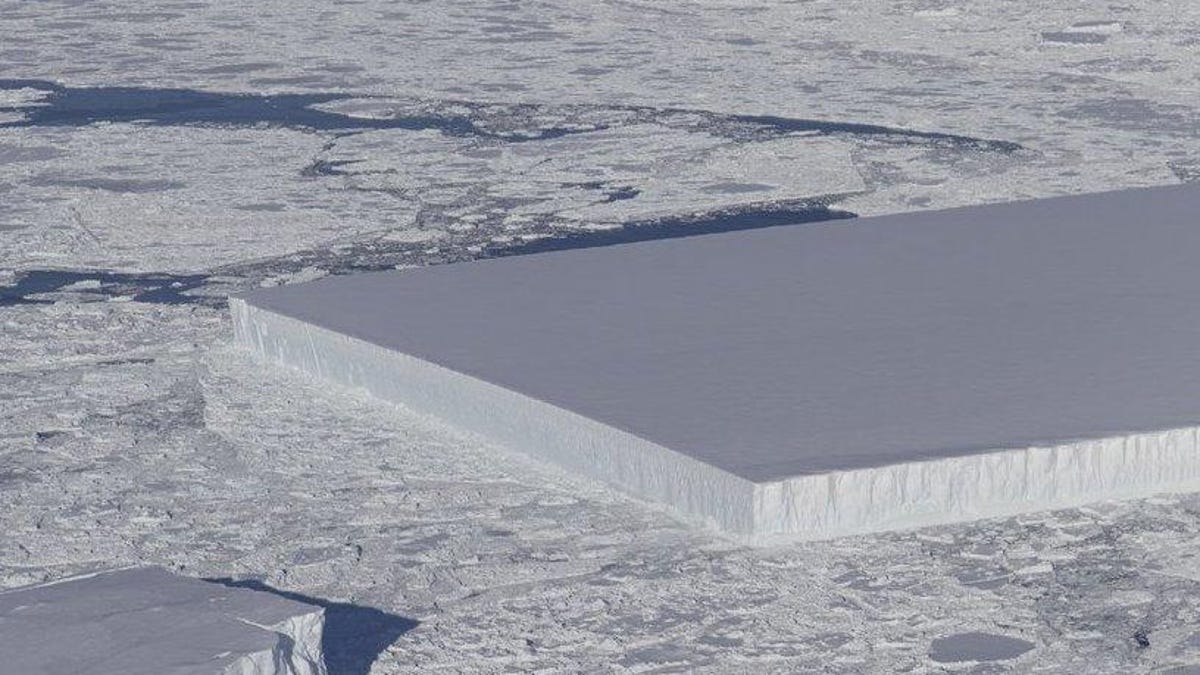NASA found where that bizarre rectangular iceberg came from
It definitely wasn't aliens in Antarctica.
A very cold internet star was born in October when a NASA survey flight over Antarctica captured a photo of a strangely squared-off iceberg. While some people joked about a possible alien origin, NASA now has proof of the berg's very terrestrial journey.
Scientists initially thought the weird iceberg, photographed by the Operation IceBridge team, had recently calved from the Larsen C ice shelf. That's the same ice shelf that gave us monster iceberg A-68 in 2017. But the real story is much lengthier.
Researchers sleuthed out the iceberg's starting point with the help of imagery from NASA's Landsat 8 and the European Space Agency's Sentinel-1 satellites.
The iceberg originally calved off the ice shelf in November 2017. It floated north in a channel of water between the ice shelf and the A-68 iceberg.
The iceberg is circled in this annotated Landsat 8 image from Oct. 14.
"The once-long rectangle berg did not make it through unscathed; it broke into smaller bits," NASA's Earth Observatory reports. The berg actually appears to be more a trapezoid shape than a pure rectangle in a Landsat 8 satellite image from Oct. 14, just days before Operation IceBridge spotted it.
The infamous geometric iceberg shined brightly, but briefly. NASA says it's moved out into open water where it'll melt away in the warmer environment.


